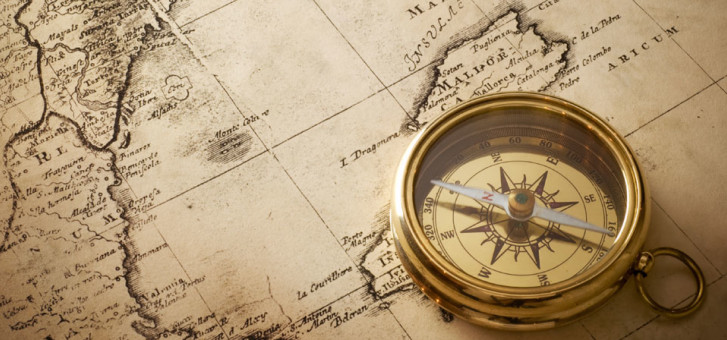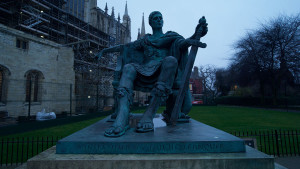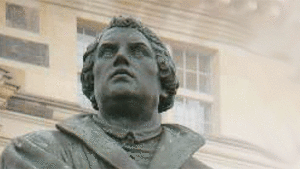It is found on the west bank of the Rhine—that great natural waterway through Europe that touches at least four countries. Speyer has two bridges spanning the river, including the newer bridge that allows the Autobahn unhindered motoring over it.
Speyer is located just 40 kilometres south of the city of Worms, where Martin Luther made his historic stand. But the history of Speyer reaches much further back in time. It is one of the oldest cities on the Rhine, founded by the Romans in 10 BC. In more modern times, being in that area continually claimed and fought for by the French and Germans, the cathedral and city were burnt in 1689 by Louis XIV of France.
Here, the dynasty of kings founded by Conrad ruled this part of Europe around 1000 years ago. Perhaps the best known king was young Henry IV, who flouted the authority of the church of that time at just 21 years of age and ordained bishops on his own authority.
The stance of the pope was to emphaises his sole right to appoint bishops in the church. This conflict over authority resulted in the historic meeting of Henry IV and Pope Gregory VII at Canossa in northern Italy.
While bowing in submission then, Henry soon wanted revenge. Some years later, he took his army and sacked Rome. As a result, his son, Henry V, was not permitted to bury his father in the sacred grounds of the Speyer Cathedral.
But, after the passage of time and maybe suitable payments, the body of Henry IV was finally moved to its final resting place in the crypt of the cathedral.
The cathedral itself is most interesting.
Known as the Cathedral of St Mary and St Stephen, it is usually just referred to as “the Kaiserdom,” as the emperor ordered its construction. It is the largest Romanesque edifice in Europe and certainly the greatest building of its time. Its east towers soar 72 metres toward the sky. After a number of restorations, it was finally restored to its original shape by 1961.
One interesting feature is the huge sandstone bowl called "the Domnapf,” situated in front of the cathedral, and built in 1490. The custom was to have it filled—holding all of 1580 litres— with wine for the celebration of each new bishop. Some in the town didn't mind how many new bishops were consecrated here! Today, the crypt houses the marble boxes holding the remains of the Conrad dynasty. Four emperors and four German kings are buried here, including Henry IV and his wife.
The Holy Roman Empire in the Middle Ages would hold meetings of princes and leaders as the need arose. There were more than 50 such meetings, called “Diets,” going back to 1146, when Bernard of Clairvaux, a bishop and hymn writer, won the support of Conrad III for the Crusades.
One such meeting was held in Speyer in 1526. It gave the princes of the realm the opportunity to choose how they dealt with the beliefs and teachings of Martin Luther. This was a compromise at the time, as the emperor and the pope were at war with each other.
Three years later, the emperor and the pope were reconciled. The Holy Roman Empire was facing a number of threats—the largest being the advancing army of Turks across Hungary, soon to reach Vienna. The emperor needed money and soldiers to repel this huge threat. The other major problem was the continuing inroads the teachings of Martin Luther and other reformers were having on the church across the empire. Surely, it was felt, a united church could more easily repel the invaders and, of course, would be more easily controlled within the empire! The emperor, Charles V, could not attend himself—but he sent his regent, Ferdinand, in his place. He then sent instructions to Ferdinand to pursue a conciliatory line with the princes who followed the teachings of Luther and Zwingli. But somehow this instruction never reached him—certainly not in time.
The date was March 15, 1529, and the Catholic dignitaries were there in full force—along with the princes and representatives of imperial cities who followed Luther and Zwingli.
The hawks on the Catholic side were determined to reverse the policy of religious toleration adopted three years earlier.
Ferdinand specifically denied the princes the right to choose which religious reforms would take effect in their states or cities, and ordered that Catholicism be followed in all states of the Holy Roman Empire.
Those princes who were now on the side of Martin Luther felt that “Christ was again in the hands of Caiaphas and Pilate.” The Edict of Worms, which had denounced Luther, was not only in force but would be enforced. The followers of Zwingli and the Anabaptists were to be excluded even from toleration.
The Anabaptists in particular were to be punished by death.
At the Diet on April 25, 1529, the Elector of Saxony, the Margrave of Brandenburg, the Landgrave of Hesse and the dukes of Braunschweig-Luneburg, and representatives of 14 imperial cities, decided to protest. They believed the Word of God was supreme and all authority came from the Scriptures.
They made their “protest” to Ferdinand— and the word “Protestant” was born. These civic leaders had come to understand the way of salvation through Christ alone and made the same stand as that made by Martin Luther at Worms some eight years previously.
The monopoly of one church over the empire was broken forever.
Today as you visit Speyer, look across the great courtyard from the cathedral and past the sandstone bowl. Over the road on a corner to the right, facing the cathedral, is a plaque on a much-newer building. This plaque records the great moment of history when the Diet of Speyer convened and the protest was made by the princes. The church today owes much to this event for the toleration for individual beliefs we take for granted.
The name “Protestant” has come to stand for Bible-believing Christians who understand from the pages of Holy Scripture that salvation for every person comes from Jesus Christ alone through faith in Him. The credo of the Reformation—Sola Scriptura, Sola Christa and Sola Fide (Scripture alone, Christ alone and faith alone)—found strong support among those princes who saw and understood the plain words of Scripture.
Protests are still made. Men and women will make a similar stand for the ultimate authority of the Word of God, and for truth. Recently in Australia, the archbishop of the Anglican Church in Sydney, Dr Peter Jensen, made such a stand. In a newspaper article, he wrote, “This protest against Roman Catholicism is no small complaint.
It goes to the very heart of God's central message to mankind—the way of salvation.”1 What is more, he said, “Protestants can be very warm and fuzzy toward Roman Catholicism but it's not actually reciprocal. We are not really seen as God's people in Christ Jesus, because the pope is seen as the vicar of Christ.
Now from a Bible-believing point of view, that is an appalling blasphemy because the Holy Spirit is the vicar of Christ.”2 Likewise, the Anglican bishop of South Sydney, Robert Forsayth, said in a speech on behalf of Protestant and Orthodox leaders: “The role of the pope was itself a divisive issue.”3 So the issues of the Diet of Speyer have still not been resolved. Protestants hold tenaciously to Scripture as the sole authority, while Catholics hold to Scripture plus the tradition of the church fathers. The “protesting” group does not accept the authority of the Bishop of Rome. It seems no compromise is possible, as it wasn't way back in 1529.
The word “Protestant” has come to stay and while both sides would uphold Jesus Christ, the sole authority of Scripture is still the issue. Maybe we should study again the reason why these princes took such a decided stand and make it our own today.
1. Sydney Morning Herald, May 27, 2008.
2. Sydney Morning Herald, July 17, 2008.
3. Sydney Morning Herald, July 19, 2008.






